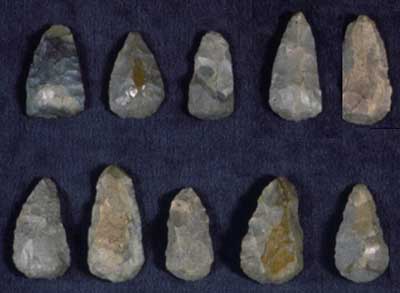Houses at Hardin were quite large. They ranged in size from 51 to 70 feet long by 24 to 29 feet wide. Individually-set posts formed the wall framework. There was no evidence that residents had interwoven sticks between the posts, then plastered over everything with daub (sun-dried clay), so it is likely that house walls were covered with bark. Cane and textile mats may have lined the inner walls. The size of these houses suggests that two or more related families lived within them. Central fire hearths suggest that families shared cooking and other domestic activities.
Residents buried their dead in a cemetery close to the house. Hearths near these cemeteries suggest that ritual feasts, similar to those documented at other Fort Ancient villages, were part of funerary ceremonies. Most individuals were buried in an extended position on their back.
Archaeologists have identified some of the objects Fort Ancient groups obtained in trade with their neighbors, such as marine shell beads and brass objects. However, researchers have yet to identify what they offered their neighbors in exchange.
Perhaps they traded animal skins. Native men and women used triangular endscrapers to clean animal hides by removing sinew, fat and hair in preparation for tanning. Large numbers of triangular endscrapers have been recovered from late Fort Ancient sites like Hardin. Perhaps an increase in animal skin processing led to a surplus that could be exchanged for non-local goods.
